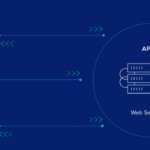When talking of open-source platforms and their success in eCommerce, it’s unlikely you have not heard of Magento. Since its introduction, Magento has been one of the go-to options for new-age entrepreneurs.
Besides, why not? Magento is an affordable, scalable, and secure development platform used by over 239,000 live websites. In this blog, we take a closer look at the different elements of the platform and understand why several Magento development company prefers it.
So continue reading as we gather a better understanding of Magento and its elements in the following sections.
Magento: A Revolution In eCommerce
The open-source Magento platform lets you create online shops while giving your consumers omnichannel experiences. It was initially introduced in 2008 and has since expanded to become the most widely used eCommerce platform. The Magento Commerce platform is used by more than 250,000 businesses globally, accounting for over 30% of the market.
Despite how large it is, the Magento ecosystem might be clarified to newbies. We’ll have an overview of Magento’s many methods and versions available for creating an online store and some of the tools available to help you get started.
Magento Website Development Approaches
- Building a brand new Magento website from scratch.
- Migrating to Magento from a different eCommerce platform.
Let’s look at both approaches in the following section.
Developing A Brand New Website Using Magento
Magento has an expandable theme, a modular design, and all the functionality needed to set up an online store swiftly. This contains, among many other things, tools for product and customer administration, sales management, reporting, payment processing, and caching and indexing.
All of these capabilities are expandable or adaptable to your needs. Nevertheless, depending on how complicated your requirements are, some development work may be required.
What’s more? A large community, including Magento agencies and third-party extension vendors, backs Magento. There are dozens of extensions to completely customize your shop or link it to third-party systems like payment engines and ERPs.
Depending on your needs, these extensions are priced differently, and some are free. A sizable pool of Magento companies and independent Magento developers also offer Magento modification services globally.
Migrating From A Different eCommerce Platform To Magento
Let’s say you already have an eCommerce store operating on a different system. In that situation, several data migration solutions, such as Cart2Cart to convert your shop from WooCommerce, the MAGMI (Magento Mass Importer), or the Shopify to Magento migration tool for a more all-encompassing strategy, might help you migrate the majority of your data across to Magento with minimum effort.
These programs may import your sales and product information. To satisfy the needs unique to your company, you will still need to install and configure third-party extensions, change your website’s appearance, and expand portions of the platform. If you want your new Magento shop to function properly and quickly, you must engage a specialized Magento web developer to translate all your data appropriately.
Different Editions Of Magento You Need To Know About
Magento Open Source/Community Edition
The Magento Community Edition is free to access! This edition offers a fundamental eCommerce foundation, but more development work will be required to appropriately tailor the business to your unique requirements.
This is the suggested alternative for small businesses or those just starting in the eCommerce industry. To make the platform more open and attract more developers from the open-source community, this version of Magento 2 has recently been dubbed Magento Open Source.
Enterprise Edition Of Magento
The most recent features and official Magento support are included in the Magento Enterprise Edition. This edition offers speed improvements and can handle big product catalogs better than the Community Edition. It is important to remember that Enterprise Edition support is relatively restricted, so you may need to engage a separate development team.
Numerous online shops currently use this edition, which is highly recommended for big clientele. Even though this option is somewhat expensive, it’s worthwhile if you want the greatest customer service.
Enterprise Cloud Edition, a previously available option in Magento 2, is now available, hosted, and managed by Magento Inc. In contrast, the conventional Enterprise Edition is hosted by a third party or on the client’s property. Magento Commerce now refers to enterprise on-premises and cloud versions on the Magento, Inc. website.
Takeaway To Build An eCommerce Magento Store
01. Pick a domain name and web host
Select a reliable host when planning to build your eCommerce store. Remember, selecting the right host depends on your company’s size and future objectives. Once done, choose a domain name that accurately describes your company.
02. Install Magento eCommerce
Once you choose a hosting and domain name, it’s time to install Magento eCommerce. Browse the Magento product page and download the required files to start.
03. Choose a theme
Choose an attractive theme from the many premium and free themes that Magento e-commerce offers to improve your e-commerce website. It will enable you to adapt your store to your needs.
04. Configure store functions
While you may specify the standard store requirements, plug-ins and extensions are necessary for the best possible user experience. Here, Magento provides a wide variety of extensions from which to choose to enhance the usability of your website.
05. Import products
To import items, go to items and choose Open Catalog. You may add items here with various properties, like descriptions, categories, prices, and names.
Once all the steps are followed, it’s time to launch your Magento store!
Magento Is Here to Stay!
No matter the version, Magento is a reliable eCommerce platform. It is a robust, scalable, and effortless platform that helps elevate your business. So, now that you know what it takes to build your store with Magento, it’s time to start. Contact your Magento development company today.








